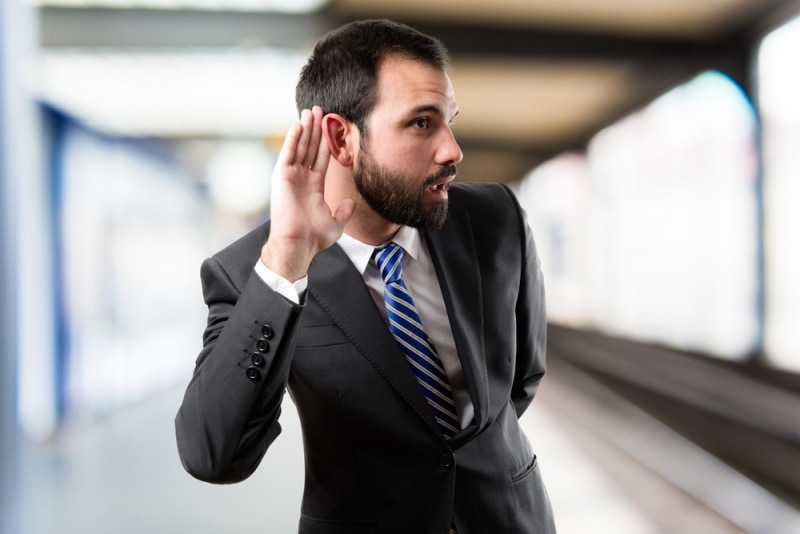How Loud Can a Human Scream? What The Science Says
-
Jeff Weishaupt
- Last updated:

We all know people who speak too loudly or quietly, but the general population speaks at only 60 decibels (dB). Regardless of how long you’re exposed to 60 dB or how close the speaker is, normal conversation is unlikely to cause hearing damage, but the same cannot be said about screams.
Although human screams are typically 80–100 dB, the loudest recorded scream was heard at 121.7 dB in 1994. Keep reading to learn more about the screaming potential of humans and how long you can be exposed to a scream before experiencing hearing damage.
How Loud Can You Scream?
Our vocal cords are surprisingly powerful but have a limit like any other body part. You may think you can scream as loud as you will, but you’ll quickly reach a decibel level that damages both your eardrums and vocal cords.
The average human scream varies from 95–105 dB, equivalent to a lawn mower, a newspaper press, or live rock music. These sounds may not seem loud enough to damage your eardrums, but prolonged exposure can cause severe hearing damage.
Although most people scream at an average of 100 dB, the loudest recorded human scream was approximately 120 dB. In 1994, Annalisa Flanagan, Belfast primary school teacher, ironically yelled the word “quiet” at an ear-ringing 121.7 dB. Since then, the teacher has had her tonsils removed and claims she experiences headaches if she attempts to break her own record.
Your vocal cords may reach or even exceed this decibel level, but we wouldn’t recommend it. It can damage your vocal cords or the eardrums of anyone in earshot, especially after prolonged exposure.

Can Screaming Cause Hearing Loss?
Yes, screaming can cause hearing loss after a specific exposure time and proximity to the sound. Each decibel level has an exposure limit, after which it may cause hearing damage for the listener.
For example, listening to a washing machine running at 70 dB for 24 hours can cause hearing damage. When it comes to screaming, listening to 100 dB for more than 15 minutes can also damage your eardrums.
Additionally, if you’re in a restaurant with a surrounding noise of 80 dB, you’ll need to be loud and close enough to the listener to be heard. These factors don’t apply just to whispers and regular conversations but also to screams.
As for the loudest scream recorded, only a few seconds of exposure to 120 dB can cause hearing loss. However, hearing damage is not guaranteed every time; you must also consider factors such as distance from the sound, the room’s acoustics, and the surrounding sound.
For example, a 120 dB scream is unlikely to cause hearing damage from 100 ft away. However, it’s also possible that a nearby 100 dB scream causes more damage than a distant 120 dB scream. In addition, a 90 dB scream in an echo chamber could have the same effect as a 110 dB scream on a busy highway.
So, it’s important to remember that these factors greatly influence the damage potential of a decibel level.

Noise Comparison Chart
Here is a noise comparison chart for different noise sources at varying decibel levels and their damage potential.
| Decibel Level | Noise Source | Damage Potential |
| 10 dB | Normal breathing | No hearing damage |
| 20 dB | Leaves rustling | No hearing damage |
| 30 dB | Quiet rural area | No hearing damage |
| 40 dB | Whispering nearby | No hearing damage |
| 50 dB | Refrigerator | No hearing damage |
| 60 dB | Normal human conversation | No hearing damage |
| 70 dB | Washing machine | Hearing damage after 24 hours |
| 80 dB | Garbage disposal | Hearing damage after two hours |
| 90 dB | Hairdryer | Hearing damage after 50 minutes |
| 100 dB | Human scream | Hearing damage after 15 minutes of exposure |
| 110 dB | Car horn | Hearing damage after one-minute exposure |
| 120 dB | Loudest recorded human scream | Serious hearing damage after a few seconds |
| 130 dB | Rock concert | Immediate harm |
| 140 dB | Gunshots | Immediate harm |
| 150 dB | Jet take-off | Eardrum rupture |
How Loud Does a Person Normally Speak?
Most people speak at 60 dB, but human conversation can get as loud as 80 dB or as quiet as 55 dB. Anything lower than 30 dB is considered a whisper, while screams are in the 80-120 dB category.
Human conversation at 60 dB is safe for listening, regardless of the distance between the speaker and listener, acoustics of the room, time of exposure, and surrounding sound.
While multiple days of continual exposure to human speech can strain your eardrums, it cannot damage them. In fact, no sounds below 80 dB are harmful to your ears. Meanwhile, sounds louder than 80 dB can also be tolerated but in moderation and at a safe distance.

Conclusion
Human screams are typically 100 dB loud. This level may not seem that loud since we hear it from the average lawn mower or motorcycle, but 15 minutes of exposure to 100 dB can cause hearing damage.
Surprisingly, screams can get as loud as 120 dB, which you may hear from a chainsaw or thunderclap. However, only a few seconds of exposure to this decibel can cause severe hearing damage.
Now that you know the potential of your voice box, you can use it wisely and protect your eardrums.
Featured Image Credit: Ollyy, Shutterstock
Contents
